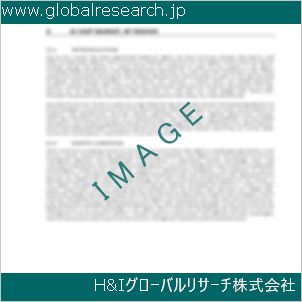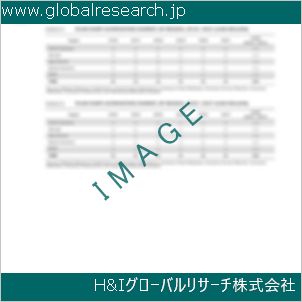Table of Contents
1 Industry Overview of Lithiumfluoride
1.1 Definition and Specifications of Lithiumfluoride
1.1.1 Definition of Lithiumfluoride
1.1.2 Specifications of Lithiumfluoride
1.2 Classification of Lithiumfluoride
1.3 Applications of Lithiumfluoride
1.3.1 Nuclear Application
1.3.2 Non-Nuclear Application
1.4 Industry Chain Structure of Lithiumfluoride
1.5 Industry Overview and Major Regions Status of Lithiumfluoride
1.5.1 Industry Overview of Lithiumfluoride
1.5.2 Global Major Regions Status of Lithiumfluoride
1.6 Industry Policy Analysis of Lithiumfluoride
1.7 Industry News Analysis of Lithiumfluoride
2 Manufacturing Cost Structure Analysis of Lithiumfluoride
2.1 Raw Material Suppliers and Price Analysis of Lithiumfluoride
2.2 Equipment Suppliers and Price Analysis of Lithiumfluoride
2.3 Labor Cost Analysis of Lithiumfluoride
2.4 Other Costs Analysis of Lithiumfluoride
2.5 Manufacturing Cost Structure Analysis of Lithiumfluoride
2.6 Manufacturing Process Analysis of Lithiumfluoride
3 Technical Data and Manufacturing Plants Analysis of Lithiumfluoride
3.1 Capacity and Commercial Production Date of Global Lithiumfluoride Major Manufacturers in 2023
3.2 Manufacturing Plants Distribution of Global Lithiumfluoride Major Manufacturers in 2023
3.3 R&D Status and Technology Source of Global Lithiumfluoride Major Manufacturers in 2023
3.4 Raw Materials Sources Analysis of Global Lithiumfluoride Major Manufacturers in 2023
4 Capacity, Production and Revenue Analysis of Lithiumfluoride by Regions, Types and Manufacturers
4.1 Global Capacity, Production and Revenue of Lithiumfluoride by Regions 2019-2024
4.2 Global and Major Regions Capacity, Production, Revenue and Growth Rate of Lithiumfluoride 2019-2024
4.3 Global Capacity, Production and Revenue of Lithiumfluoride by Types 2019-2024
4.4 Global Capacity, Production and Revenue of Lithiumfluoride by Manufacturers 2019-2024
5 Price, Cost, Gross and Gross Margin Analysis of Lithiumfluoride by Regions, Types and Manufacturers
5.1 Price, Cost, Gross and Gross Margin Analysis of Lithiumfluoride by Regions 2019-2024
5.2 Price, Cost, Gross and Gross Margin Analysis of Lithiumfluoride by Types 2019-2024
5.3 Price, Cost, Gross and Gross Margin Analysis of Lithiumfluoride by Manufacturers 2019-2024
6 Consumption Volume, Consumption Value and Sale Price Analysis of Lithiumfluoride by Regions, Types and Applications
6.1 Global Consumption Volume and Consumption Value of Lithiumfluoride by Regions 2019-2024
6.2 Global and Major Regions Consumption Volume, Consumption Value and Growth Rate of Lithiumfluoride 2019-2024
6.3 Global Consumption Volume and Consumption Value of Lithiumfluoride by Types 2019-2024
6.4 Global Consumption Volume and Consumption Value of Lithiumfluoride by Applications 2019-2024
6.5 Sale Price of Lithiumfluoride by Regions 2019-2024
6.6 Sale Price of Lithiumfluoride by Types 2019-2024
6.7 Sale Price of Lithiumfluoride by Applications 2019-2024
6.8 Market Share Analysis of Lithiumfluoride by Different Sale Price Levels
7 Supply, Import, Export and Consumption Analysis of Lithiumfluoride
7.1 Supply, Consumption and Gap of Lithiumfluoride 2019-2024
7.2 Global Capacity, Production, Price, Cost, Revenue, Supply, Import, Export and Consumption of Lithiumfluoride 2019-2024
7.3 USA Capacity, Production, Price, Cost, Revenue, Supply, Import, Export and Consumption of Lithiumfluoride 2019-2024
7.4 EU Capacity, Production, Price, Cost, Revenue, Supply, Import, Export and Consumption of Lithiumfluoride 2019-2024
7.5 China Capacity, Production, Price, Cost, Revenue, Supply, Import, Export and Consumption of Lithiumfluoride 2019-2024
7.6 Japan Capacity, Production, Price, Cost, Revenue, Supply, Import, Export and Consumption of Lithiumfluoride 2019-2024
8 Major Manufacturers Analysis of Lithiumfluoride
8.1 Manufacturer One
8.1.1 Company Profile
8.1.2 Product Picture and Specifications
8.1.2.1 Type I
8.1.2.2 Type II
8.1.2.3 Type III
8.1.3 Capacity, Production, Price, Cost, Gross and Revenue
8.1.4 Contact Information
8.2 Manufacturer Two
8.2.1 Company Profile
8.2.2 Product Picture and Specifications
8.2.2.1 Type I
8.2.2.2 Type II
8.2.2.3 Type III
8.2.3 Capacity, Production, Price, Cost, Gross and Revenue
8.2.4 Contact Information
8.3 Manufacturer Three
8.3.1 Company Profile
8.3.2 Product Picture and Specifications
8.3.2.1 Type I
8.3.2.2 Type II
8.3.2.3 Type III
8.3.3 Capacity, Production, Price, Cost, Gross and Revenue
8.3.4 Contact Information
8.4 Manufacturer Four
8.4.1 Company Profile
8.4.2 Product Picture and Specifications
8.4.2.1 Type I
8.4.2.2 Type II
8.4.2.3 Type III
8.4.3 Capacity, Production, Price, Cost, Gross and Revenue
8.4.4 Contact Information
8.5 Manufacturer Five
8.5.1 Company Profile
8.5.2 Product Picture and Specifications
8.5.2.1 Type I
8.5.2.2 Type II
8.5.2.3 Type III
8.5.3 Capacity, Production, Price, Cost, Gross and Revenue
8.5.4 Contact Information
…
9 Marketing Trader or Distributor Analysis of Lithiumfluoride
9.1 Marketing Channels Status of Lithiumfluoride
9.2 Traders or Distributors with Contact Information of Lithiumfluoride by Regions
9.3 Ex-work Price, Channel Price and End Buyer Price Analysis of Lithiumfluoride
9.4 Regional Import, Export and Trade Analysis of Lithiumfluoride
10 Industry Chain Analysis of Lithiumfluoride
10.1 Upstream Major Raw Materials Suppliers Analysis of Lithiumfluoride
10.1.1 Major Raw Materials Suppliers with Contact Information Analysis of Lithiumfluoride
10.1.2 Major Raw Materials Suppliers with Supply Volume Analysis of Lithiumfluoride by Regions
10.2 Upstream Major Equipment Suppliers Analysis of Lithiumfluoride
10.2.1 Major Equipment Suppliers with Contact Information Analysis of Lithiumfluoride
10.2.2 Major Equipment Suppliers with Product Pictures Analysis of Lithiumfluoride by Regions
10.3 Downstream Major Consumers Analysis of Lithiumfluoride
10.3.1 Major Consumers with Contact Information Analysis of Lithiumfluoride
10.3.2 Major Consumers with Consumption Volume Analysis of Lithiumfluoride by Regions
10.4 Supply Chain Relationship Analysis of Lithiumfluoride
11 Development Trend of Analysis of Lithiumfluoride
11.1 Capacity, Production and Revenue Forecast of Lithiumfluoride by Regions and Types
11.1.1 Global Capacity, Production and Revenue of Lithiumfluoride by Regions 2024-2029
11.1.2 Global and Major Regions Capacity, Production, Revenue and Growth Rate of Lithiumfluoride 2024-2029
11.1.3 Global Capacity, Production and Revenue of Lithiumfluoride by Types 2024-2029
11.2 Consumption Volume and Consumption Value Forecast of Lithiumfluoride by Regions, Types and Applications
11.2.1 Global Consumption Volume and Consumption Value of Lithiumfluoride by Regions 2024-2029
11.2.2 Global and Major Regions Consumption Volume, Consumption Value and Growth Rate of Lithiumfluoride 2024-2029
11.2.3 Global Consumption Volume and Consumption Value of Lithiumfluoride by Types 2024-2029
11.2.4 Global Consumption Volume and Consumption Value of Lithiumfluoride by Applications 2024-2029
11.3 Supply, Import, Export and Consumption Forecast of Lithiumfluoride
11.3.1 Supply, Consumption and Gap of Lithiumfluoride 2024-2029
11.3.2 Global Capacity, Production, Price, Cost, Revenue, Supply, Import, Export and Consumption of Lithiumfluoride 2024-2029
11.3.3 USA Capacity, Production, Price, Cost, Revenue, Supply, Import, Export and Consumption of Lithiumfluoride 2024-2029
11.3.4 EU Capacity, Production, Price, Cost, Revenue, Supply, Import, Export and Consumption of Lithiumfluoride 2024-2029
11.3.5 China Capacity, Production, Price, Cost, Revenue, Supply, Import, Export and Consumption of Lithiumfluoride 2024-2029
11.3.6 Japan Capacity, Production, Price, Cost, Revenue, Supply, Import, Export and Consumption of Lithiumfluoride 2024-2029
12 New Project Investment Feasibility Analysis of Lithiumfluoride
12.1 New Project SWOT Analysis of Lithiumfluoride
12.2 New Project Investment Feasibility Analysis of Lithiumfluoride
13 Conclusion of the Global Lithiumfluoride (CAS 7789-24-4) Industry 2024 Market Research Report
| ※参考情報 フッ化リチウム(Lithium fluoride、化学式 LiF)は、無機化合物の一種であり、リチウムとフッ素から成り立っています。CAS番号は7789-24-4で、分子中のリチウムは+1の酸化状態にあり、フッ素は-1の酸化状態にあります。この化合物は、白色の結晶体として存在し、高い融点や強い化学的安定性を持っていることが特徴です。 フッ化リチウムは、通常、融点が約848℃と比較的高いため、高温環境でも使用可能です。また、融解した状態での導電性が良好で、これによりさまざまな用途に応じて利用されています。環境中に存在するリチウムとフッ素の性質から、フッ化リチウムは非常に安定した化合物とされており、酸や塩基に対しても耐性を持っています。 フッ化リチウムの主な用途の一つは、核融合炉や中性子検出器など、放射線関連の技術における中性子捕獲材料としての使用です。フッ化リチウムは、中性子を効果的に吸収し、反応生成物としてリチウムイオンを放出する特性を持っています。このため、核融合研究や核エネルギー関連の分野で非常に重要な役割を果たしています。さらに、フッ化リチウムはリチウムの供給源としても利用されており、リチウムイオン電池の材料としての需要が高まる中、その存在意義は増しています。 また、フッ化リチウムは高温超伝導体の研究においても注目されています。特に、フッ化リチウムは他の金属フッ化物と共に使用されることで、超伝導体の性能向上に寄与することがあります。このように、フッ化リチウムは単なる化合物に留まらず、先端技術の研究開発において不可欠な材料とされています。 加えて、フッ化リチウムは化学工業の分野でも利用され、ある種の化合物の合成においてフッ化剤としての役割を果たします。例えば、フッ化リチウムは有機合成化学においてフッ素原子を導入するための反応を促進するために用いられることがあります。これにより、フッ素を含む有機化合物の製造が可能となり、医薬品や農薬の開発において大きなメリットをもたらします。 フッ化リチウムはまた、製薬業界においても重要な役割を果たしています。フッ化リチウムを含む薬剤は、その抗ウイルスや抗菌作用により、感染症の治療に利用されることがあります。フッ化リチウムの化合物は、生物学的に活性な構造を持つことが多く、新しい治療法や薬剤の開発に貢献しています。 このように、フッ化リチウムはその広範な用途から、科学技術の進展において重要な材料となっています。特に、エネルギー分野やバイオ医薬品分野での応用が進む中、その研究や開発は今後も活発になると考えられます。新しい技術の開発やフッ化リチウムの特性を利用した新たな応用方法の探求は、今後の産業界においても注目されるテーマとなるでしょう。 フッ化リチウムは、他のリチウム化合物と比較しても、過酷な条件下での安定性を示すため、さまざまな分野で優れた性能を発揮します。このような特性を持つフッ化リチウムは、今後の科学研究や工業応用において、ますます重要な役割を果たすことになるでしょう。リチウム関連の技術が進化する中で、フッ化リチウムの役割は一層強化されていくと予想されます。 |
❖ 免責事項 ❖
http://www.globalresearch.jp/disclaimer












